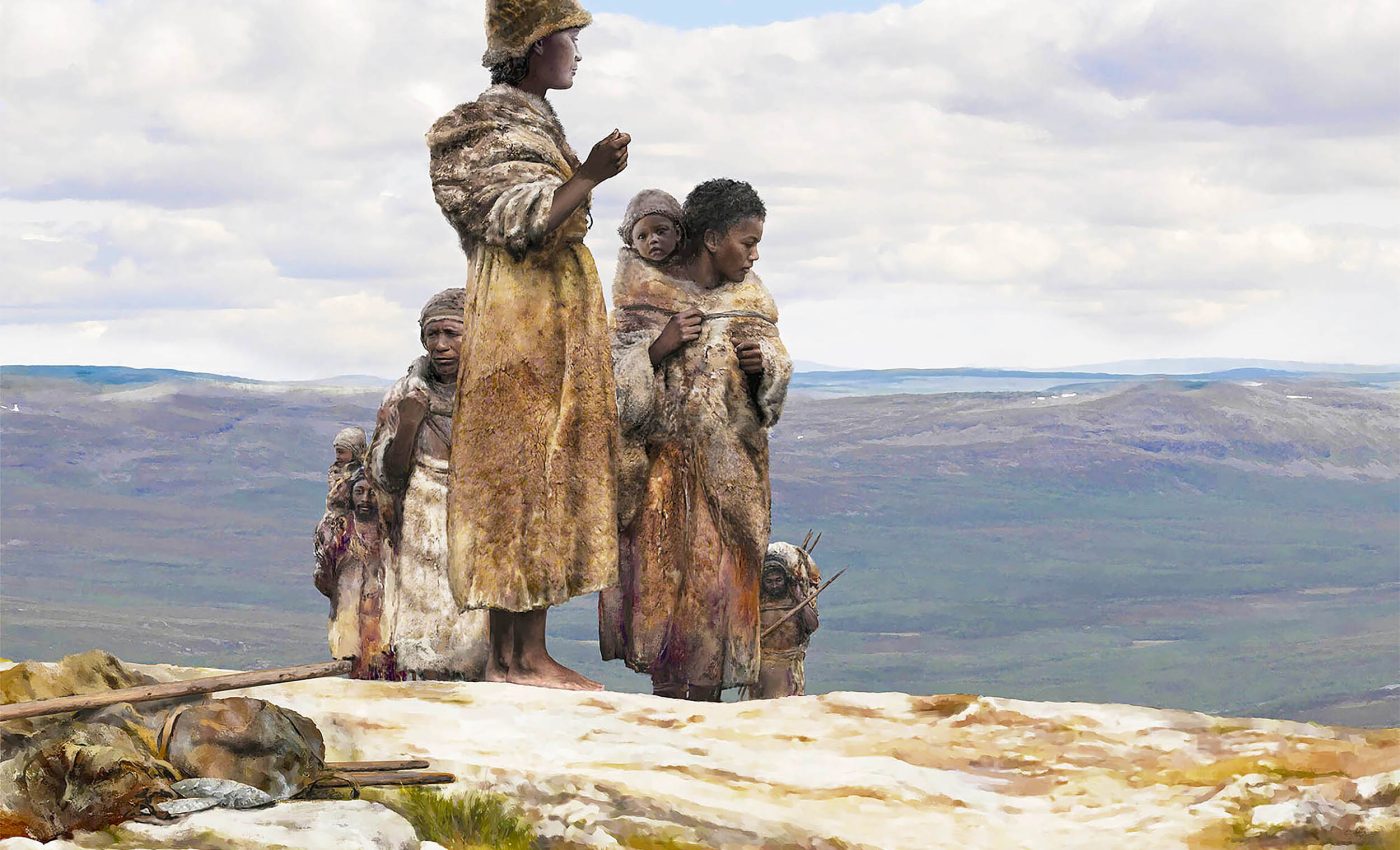
Oldest human DNA ever found comes from a still-unknown relative from Neanderthal times
About 45,000 years ago, something unusual happened in Ice Age Europe. A new wave of modern humans wandered in from the southeast and found a continent already home to a very different kind of human: the Neanderthals.
These early modern people looked a lot like us, but they weren’t alone. For around 5,000 years, the two species shared this chilly landscape – and occasionally, shared genes.
That ancestry is still written into our DNA. If your family roots lie outside Africa, about 2–3% of your genes probably came from Neanderthals. The legacy of that ancient interaction lives on in almost everyone alive today.
But until recently, scientists didn’t know much about those early human groups who first set foot in Europe. A new study is now shedding light on their lives, their tools, and their surprising family connections.
Bones from a German cave
Deep in a German cave called Ranis, scientists unearthed a collection of tiny, fragile bones.
The bones, which date to between 42,000 and 49,000 years ago, came from at least six individuals – men, women, and even infants. Some were closely related – one pair was a mother and her daughter.
Across the border in Czechia, a skull was found at a site called Zlatý kůň. The skull came from a woman who lived around the same time as the people in Ranis. At first, the team didn’t know if the two sites were connected.
After extracting DNA from these ancient remains, researchers made a startling discovery. The woman from Czechia and two individuals from Ranis were fifth- or sixth-degree relatives.
This is the level of connection you might share with a distant cousin. It meant these people were not isolated wanderers but part of a larger, extended community of early Europeans.
Neanderthal or human tools?
The Ranis cave is known for a particular style of ancient tools called LRJ tools, short for Lincombian-Ranisian-Jerzmanowician.
For years, archaeologists debated whether these finely made stone tools were crafted by Neanderthals or modern humans. Now there’s a clear answer.

Because the tools and bones were found side by side, and the DNA shows the bones came from modern humans, it’s now confirmed that early modern humans shaped these tools.
This also connects Zlatý kůň to the same culture. Even though her skull was found without tools nearby, her genetic link to the Ranis group suggests she likely used – or at least knew – LRJ tools as well.
A short-lived family tree
The team from the Max Planck Institute for Evolutionary Anthropology recovered the oldest high-quality modern human genomes ever sequenced.
One specimen from Ranis, nicknamed Ranis13, had DNA so well preserved that researchers could reconstruct his entire genome with incredible detail.

But what they found added a layer of mystery. These early Europeans, including Ranis13 and the woman from Zlatý kůň, don’t seem to have left any descendants in today’s world. Their genetic line disappeared.
That’s not to say they didn’t matter. Their DNA still carries traces of a much older encounter with Neanderthals. This likely happened once, between 45,000 and 49,000 years ago, before the group fully moved into Europe.
Mystery human group and Neanderthals
Other ancient humans found in Europe and Asia show signs of much more recent Neanderthal ancestry.
In some cases, Neanderthal ancestors were just 10 to 20 generations back. That’s like having a great-great-great-grandparent who was Neanderthal.
But the Ranis and Zlatý kůň individuals didn’t show any signs of those recent mixes. Their Neanderthal DNA came from the same event that all non-African people share. No recent overlap. No second wave.
This difference suggests something curious: maybe this early group entered Europe a different way. Or maybe they simply didn’t cross paths with many Neanderthals during their stay.
How big was the group?
Looking at shared DNA chunks in the Ranis and Zlatý kůň genomes, scientists estimated the group’s size. They think only a few hundred people made up this entire population, spread across a broad area.
It’s a tiny number. It hints at how precarious life must have been at the edge of the Ice Age, in an unfamiliar land, with harsh winters and tough competition from Neanderthals who had called the region home for far longer.
What did these ancient cousins look like?

By examining specific genes tied to physical traits, the researchers found that they likely had dark skin, dark hair, and brown eyes. This matches what we’d expect from people with recent African origins, which they certainly had.
They were among the first to leave Africa and step into Europe’s frozen frontier. They may not have survived the long term, but they were part of the same species that would one day build cities, write symphonies, and send satellites into orbit.
A fleeting presence, a lasting story
“These results provide us with a deeper understanding of the earliest pioneers that settled in Europe,” said Johannes Krause, senior author of the study.
“They also indicate that any modern human remains found outside Africa that are older than 50,000 years could not have been part of the common non-African population that interbred with Neanderthals and is now found across much of the world.”
Their time was brief and their lineage didn’t last – but the Ranis and Zlatý kůň people left behind a story buried in bone and stone.
A story about movement, connection, and the unpredictability of survival. They didn’t become our ancestors. But they were still a part of us.
The full study was published in the journal Nature.
—–
Like what you read? Subscribe to our newsletter for engaging articles, exclusive content, and the latest updates.
Check us out on EarthSnap, a free app brought to you by Eric Ralls and Earth.com.
—–













